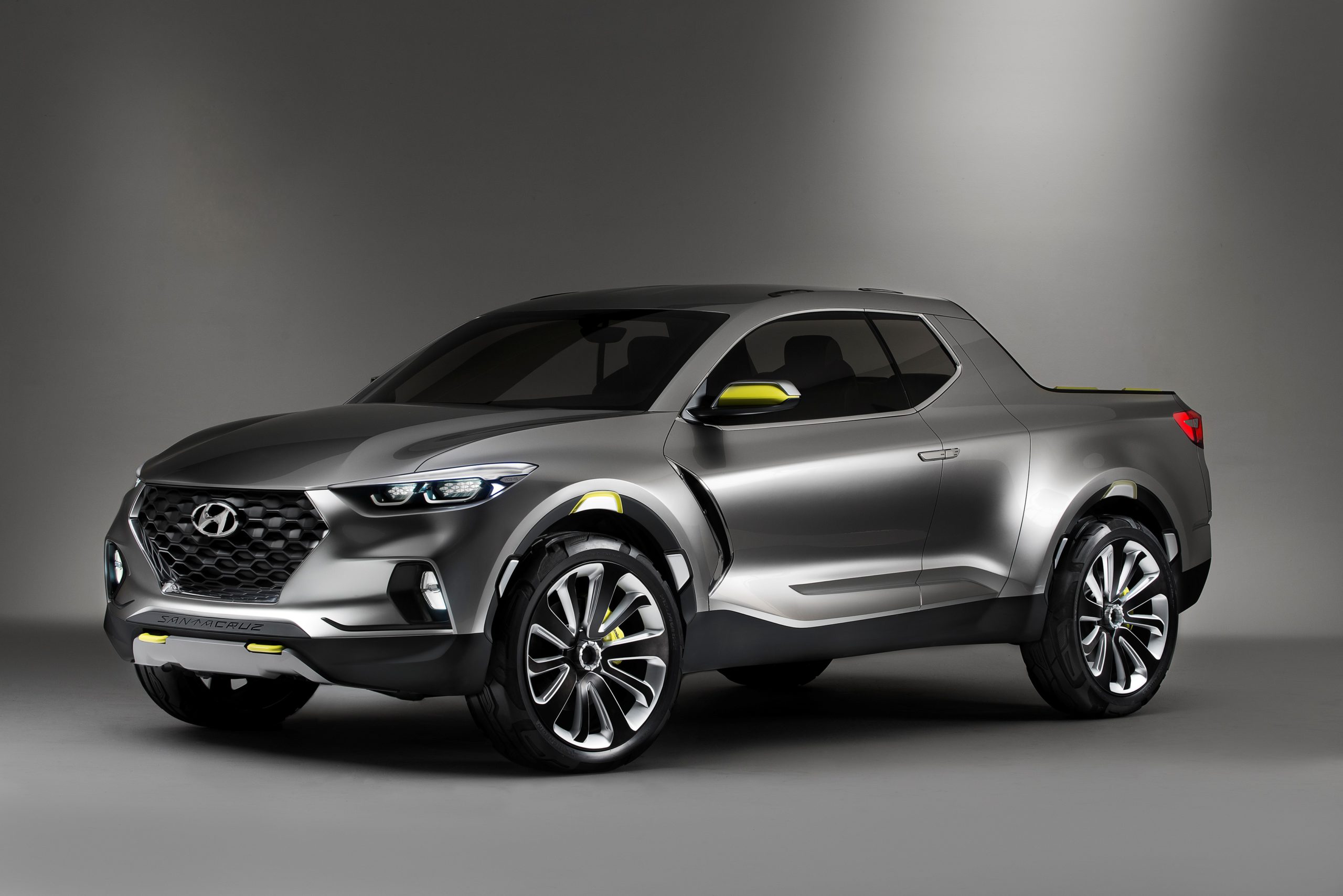2023 Hyundai Santa Cruz: What you need to know about the compact pickup
Hyundai Santa Cruz crossover truck concept from NAIAS. Photo credit: Hyundai
The Hyundai Santa Cruz Concept stole the show when it debuted at the 2015 North American International Auto Show. A compact to mid-size pickup truck packed with style and flair, it was the solution for those who want a truck but demanded the comfort and driving ease of a car.
It has been five years since the Santa Cruz Concept was shown and Hyundai has confirmed that it’s going into production at its Montgomery, Alabama facility alongside the Tucson, Santa Fe, Sonata, and Elantra. What can you expect from this new entry in the truck segment? Here’s what we know so far.
2023 Hyundai Santa Cruz: Body and platform
The Hyundai Santa Cruz is expected to share the same underpinnings as the 2022 Tucson. Both vehicles even use nearly identical project codenames: NX4 for the Tucson and NX4 OB for the Santa Cruz. The pickup is likely to have a longer wheelbase and be wider than its crossover counterpart.
Like Honda’s Ridgeline, the Hyundai Santa Cruz will only come as a four-door crew cab with a bed measuring four- to five feet in length. Keep in mind that this is one of those so-called “lifestyle” trucks, meaning it’s made more for play and hauling your big kid toys rather than work. Towing and payload capacity should reflect this, meaning the truck’s overall capabilities will be closer to the Ridgeline’s, not the Toyota Tacoma or Chevrolet Colorado. Expect an independent rear suspension instead of a solid rear axle.
On the design front, the Hyundai Santa Cruz will borrow a lot of cues from the brand’s current SUV lineup. Expect the front end to follow the same theme as the mechanically-related Tucson complete with its iteration of Hyundai’s corporate grille to keep it from looking like a truck version of its SUV siblings. Don’t expect the Santa Cruz to adopt the full-width taillight layout; it’ll likely get clusters similar to the ones found in the three-row Palisade.
2023 Hyundai Santa Cruz: What will power the truck?
Hyundai will likely equip the Santa Cruz with the same powertrain options as the Tucson. The most interesting ones are the two potential hybrid systems.
In the Tucson, the hybrid powertrain uses a 1.6-liter turbo-four coupled to a lithium-ion battery, a six-speed automatic, and an electric motor. In the conventional hybrid, the total system output is 227 hp. Plug-in hybrid iterations increase combined output to 261 hp thanks to a larger 13.8-kWh battery (versus 1.49-kWh in the standard hybrid) and a 90-hp electric motor instead of a 59-hp one. The trade-off to the hybrid versions’ higher efficiency will likely be total towing and payload capacities.
2023 Hyundai Santa Cruz: Tech and safety
Since the Santa Cruz will share the majority of its parts with Tucson, all of Hyundai’s latest tech should be available. Expect a full suite of collision prevention technologies to be standard or optional. Hyundai’s semi-autonomous driver assistance features should also be present. Highway Driving Assist enhances adaptive cruise control and lane centering, which should make driving long distances and navigating heavy traffic easier.
Also expect the Santa Cruz’s interior to feature the same minimalistic layout as the Tucson. However, it could ditch the waterfall-like center stack for something more unique. The dual display layout that you find in every new Hyundai since the Palisade and latest Sonata launched will likely find its way into the higher grades of the Santa Cruz.
Our take

The Hyundai Santa Cruz will likely be one of the smallest pickup trucks on the market when the production version officially arrives. Although it won’t be as small as the Subaru Baja, the Santa Cruz will likely be more compact than a Honda Ridgeline, which could give it a more carlike driving experience.
Available hybrid and plug-in hybrid powertrains should give the Santa Cruz a unique position in the truck segment as an option that provides utility without sacrificing power and efficiency. AWD may also be standard on the electrified versions of the Santa Cruz, which should make it stand out even more. Best of all, Hyundai’s upcoming truck has the potential to revive the compact truck segment, which has been gone since the previous generation Ranger left the U.S. market.

